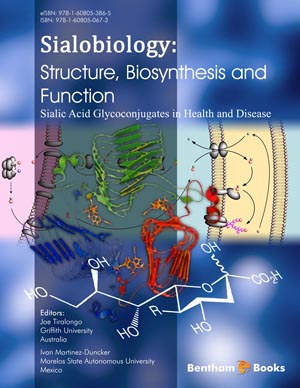Abstract
SHS investigation development is considered from the geographical and historical viewpoint. 3 stages are described. Within Stage 1 the work was carried out in the Department of the Institute of Chemical Physics in Chernogolovka where the scientific discovery had been made. At Stage 2 the interest to SHS arose in different cities and towns of the former USSR. Within Stage 3 SHS entered the international scene. Now SHS processes and products are being studied in more than 50 countries.
Abstract
Sialylation reactions take place in the lumen of the Golgi apparatus where sialyltransferases (STs) decorate glycan moieties of both the cell surfaces associated and secreted proteins and lipids with sialic acids (Sia) predominantly, but not exclusively employing, CMP-Neu5Ac as donor substrate. Because of its physical and chemical properties, CMP-Neu5Ac is unable to diffuse across the Golgi membrane and must be translocated from the cell cytosol into the lumen of the Golgi apparatus. Such translocation is performed by the CMP-Sia transporter, a member of an evolutionary conserved family of proteins together referred to as nucleotide sugar transporters. Although several nucleotide sugar transporters, including the CMP-Sia transporter, have been biochemically characterized over the last 30 years, the lack of a three-dimensional structure of any nucleotide sugar transporter requires alternative approaches to elucidating the structure-function relationship of this class of protein. We describe in this chapter the latest data reporting the elucidation of CMP-Sia transporter structurefunction relationship.
Keywords:
CMP-sialic acid transporter, Nucleotide sugar transporters, Golgi apparatus, CMP-sialic acid transporter structure-function, Saturation Transfer Difference NMR, CMP-N-acetylneuraminic acid, trans-membrane domains.
Recommended Chapters
We recommend

Authors:Bentham Science Books


 Download PDF Flyer
Download PDF Flyer



